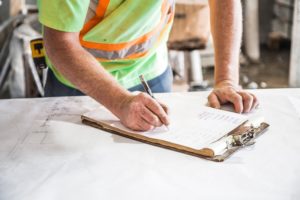 The market for used industrial machinery is becoming increasingly important and machines often have more than one owner.
The market for used industrial machinery is becoming increasingly important and machines often have more than one owner.
The management of the life cycle and the traceability of the machine have become essential, for the design, production, and maintenance but also for a possible resale.
As in other sectors of the occasion, the Internet transforms the development of the used machinery market: cost reduction, intermediaries, time-saving, etc.
What is the process of buying a used machine?
1. Define the specifications of the desired machine
First of all, it’s important to determine the type of machine desired and to know its technical characteristics. It’s also essential to know for how long your machine will be used, so to better anticipate its life cycle or even a future resale.
2. Organize searches via different channels (internet, network, local resellers)
Several channels and methods to purchase a used machine exist. The Internet has the advantage of reducing costs, eliminating time and some intermediaries, even if you still have to pay attention to compliance and the quality of the service provider.
It may be interesting to use a network or local resellers for some geographical proximity but some online marketplace like Exapro puts directly in touch buyers and sellers from all over the world. The advantage is that they speak the language of the buyer/seller and you don’t have look for geographical proximity. They take care of everything.
3. Selection of the supplier and termination of the sale terms
It’s then necessary to agree on the sale conditions as well as the legislation according to the geographical area. For instance, it’s important not to neglect European regulations including the CE marking and the machine insurance system.
If you buy via a website, it’s advisable to move to see the state of the machine. However, you can organize an online inspection.
4. Logistic preparation for the machine arrival
Once your machine is purchased, you have to prepare the arrival. Having all the data on the machine (documentation, traceability, modifications…) is essential to ensure its operation and respond to potential audits.
You can prepare a layout plan in order to have a global vision of the space available.
5. Reception and putting into production
Once your workplace is set up, make sure all safety standards are met. Test the machine on a small sample (never on a complete production).
It’s important to tell the safety rules (which implies recovering them), not only to the person concerned by the machine but also to the rest of the teams. The goal is to know how to react in case of an incident.
6. Programming of maintenance operations
The programming of the maintenance operations is based on the past maintenance of the machine. It’s necessary to recover this information from the dealer to allow optimum machine maintenance.
7. The output of the machine: return to the second-hand market or reinforcement
Properly managing the life cycle of your machine and all related information is critical to be able to resell it optimally.
Once again, you must anticipate the sale: prepare your machine, check the security standards and collect the necessary documents for sale.
As the same way like the transfer between the designer of the machine and its buyer, the purchase of a used machine requires an optimal traceability of all information related to the machine (documentation, modifications, audits, standards, constraints …).
As the number of participants in the machine lifecycle grows, so does the importance of Product Lifecycle Management to ensure data continuity at every step.
Thank you for reading our articles, stay informed about the industrial world and Exapro by following us on Exapro Hub, Facebook, Twitter, and LinkedIn.



